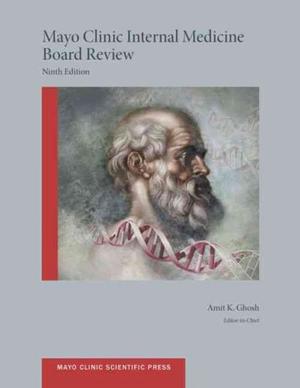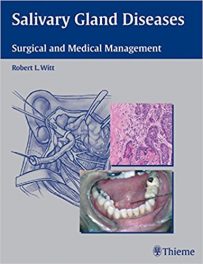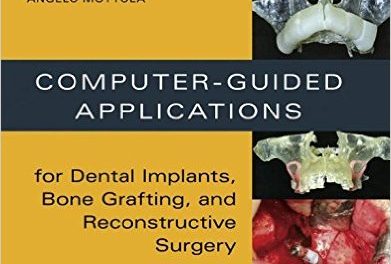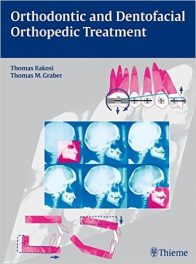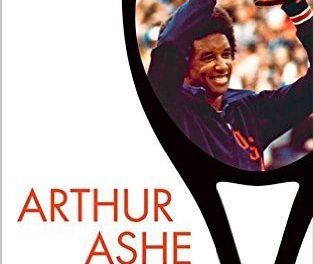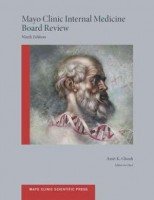 Editor-in-Chief: Amit K. Ghosh
Editor-in-Chief: Amit K. Ghosh
Associate Editors: Drs. Deborah J. Rhodes, Thomas J. Beckman, Christopher M. Wittich, Randall S. Edson and Dennis K. McCallum
Publisher: Oxford University Press, 994 pages
Book Review by: Nano Khilnani
This important guide to helping doctors-in-training prepare for the commonly-termed ‘board exams’ and pass them, to enter the exalted profession of medicine, was first published in 1994. This ninth edition, published in 2010, is a 994-page guide, with 26 chapters, to preparing for and passing the certifying (and maintenance of certification) exam of the American Board of Internal Medicine (ABIM). It has been put together under the supervision of its highly capable editor-in-chief Dr. Amit K. Ghosh.
Dr. Ghosh is a professor of medicine at the College of Medicine at the famed Mayo Clinic in Rochester, Minnesota. He is also a consultant at the division of general internal medicine at that institution, part of the world-renowned Mayo Clinic.
There are five associate editors, four being doctors of medicine and two being doctors of pharmacology. Yes, the numbers do not add up to five, but that is because associate editor Christopher M. Wittich is not only an MD but also a PharmD.
The other MDs are: Deborah J. Rhodes, Thomas J. Beckman, and Randall S. Edson. The fifth associate editor who not only has a PharmD but also an RPh is Dennis K. McCallum.
A Foreword by Morie A. Gortz, MD, who is Chair of the department of internal medicine and professor of medicine at the Mayo college of medicine states that one of the top goals of the Mayo Clinic is to lead the nation in the development of life-long learning programs and educating the physician and non-physician at all levels of the education continuum, mainly by providing state-of-the art graduate medical education.
This annual review of internal medicine is a significant effort in producing new doctors, who will also be good ones. Passing the ABIM exams is certainly the most important first filter in choosing people qualified to be competent physicians.
Every chapter in this latest edition has been updated, and several algorithms and diagrams have been added, writes Dr. Ghosh in his Preface. He also states that numerous case vignettes, tables and figures in each chapter highlight and summarize important clinical information. He asserts that this book is comprehensive and assures us that it is easy to study.
Each (or a group) of the 26 chapters of this review of knowledge and exam-preparation guide is devoted to a different medical specialty, which ranges in medical specialty from allergy to women’s health.
Besides these two subjects, the following are covered: cardiology, critical care medicine, dermatology, endocrinology, gastroenterology and hepatology, genetics, geriatrics, hematology, HIV infection, hospital medicine, hypertension, infectious diseases, internal medicine, medical ethics, men’s health, nephrology, neurology, oncology, preventive medicine, psychiatry, pulmonary diseases, rheumatology, and vascular diseases.
There are 62 doctors affiliated with the Mayo Clinic who have contributed to this volume, numerous articles on topics within specific areas of their expertise.
One of the most, if not the most important chapter in this review guide is Chapter 1 entitled The Board Examination by Amit K. Ghosh, the editor-in-chief of this publication. I would urge the reviewer not to skip this chapter for obvious reasons: it spells out the format and contents of the long eight-hour board exam.
One must read, reread, write notes on, and review the contents of this chapter. It is because I believe, as many others will emphasize to you, that the success in passing exams is not just what you know (in this case medical knowledge and clinical experience). Equally as important is how to take a particular exam successfully.
This 10-page first chapter The Board Examination gives you critical information on such important topics as: the aim of the examination, the examination format, scoring (what could be more important than that?), the content, question format (with examples), answers to each question in previous pages, how to prepare for the exam, what to do on the day of the exam, and connections.
Connections are associations, causes, complications and other relationships between a phenomenon or disease and clinical features. These are important to remember and recognize, Dr. Ghosh emphasizes. As an example, he presents a table with possible sources of various diseases on the left side, with the respective agent and particular disease on the right side of the table.
This review guide to the American Board of Internal Medicine or ABIM exams is an excellent one, with comprehensive coverage of all medical fields laid out on its pages by more than 60 specialists, and a very valuable nine-page chapter by the editor-in-chief Dr. Amit K. Ghosh. This chapter guides you how to best prepare for this exam and pass it very successfully.
Our congratulations to all of the editors, the contributors, and to Oxford University Press for an outstanding editorial and medical product – the Mayo Clinic Internal Medicine Board Review, which in my earnest opinion is also a highly valuable contribution to the world of medicine.

